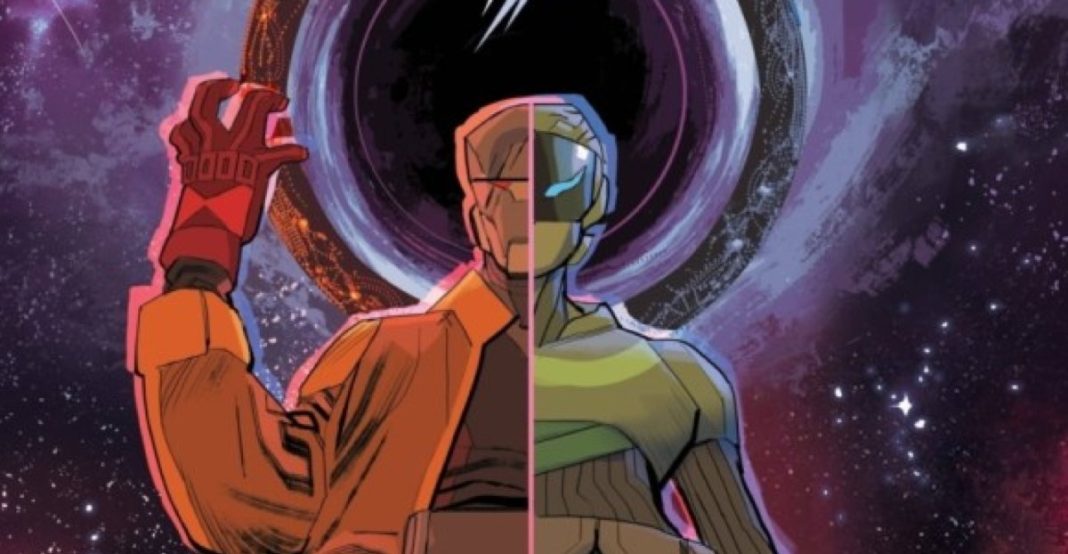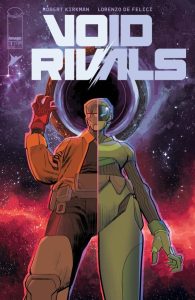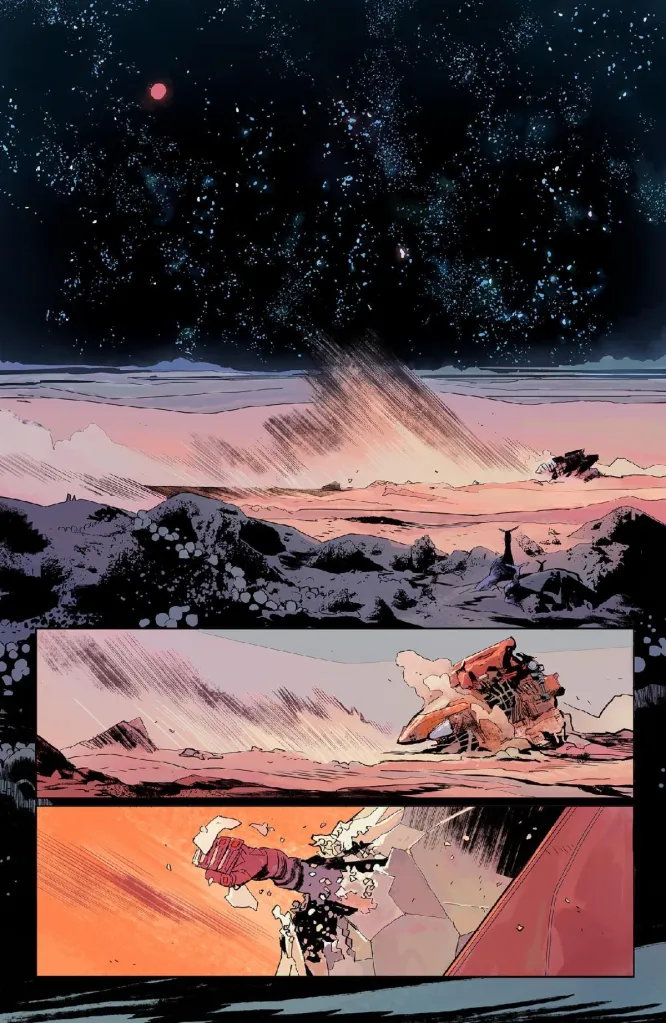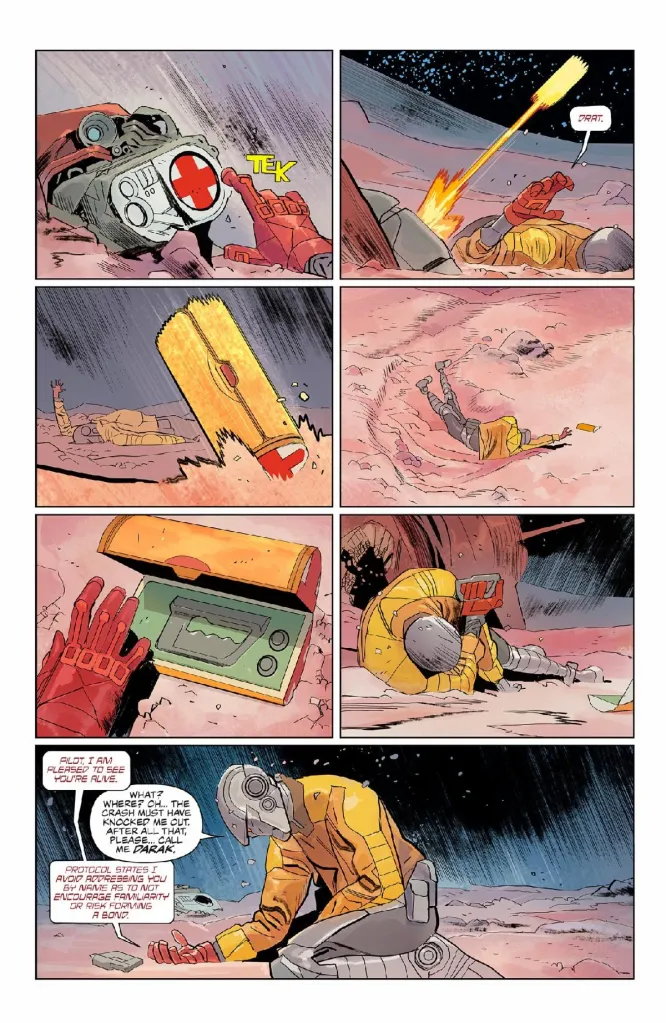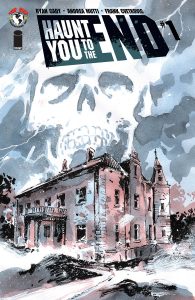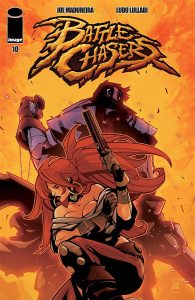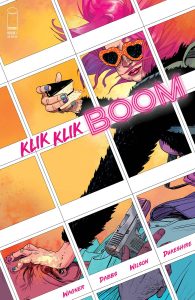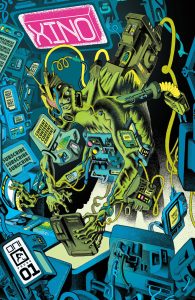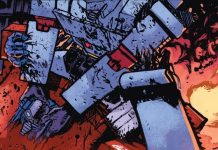This week’s lead review is Void Rivals #1, which launches a new shared universe with some familiar elements. Be warned, though, SPOILERS BELOW. Plus, the Wednesday Comics Team has its usual rundown of the new #1s, finales and other notable issues from non-Big 2 publishers, all of which you can find below … enjoy!
 Void Rivals #1
Void Rivals #1
Writer: Robert Kirkman
Artist: Lorenzo De Felici
Colorist: Matheus Lopes
Letterer: Rus Wooton
Publisher: Image Comics – Skybound
By the time this review posts, the official embargo will be lifted and everyone will know about the surprise (already spoiled in some corners of the Internet) — Void Rivals #1 is the stealth launch of the new Energon Universe from Skybound, which will feature long-running franchises, Transformers and G.I. Joe. Both of those properties left comics publisher IDW last year, with no official word about where they would show up next. Well, the answer is here.
To get this shared universe started, we have Void Rivals from writer Robert Kirkman, artist Lorenzo De Felici, colorist Matheus Lopes, and letterer Rus Wooton. It’s the same creative team from the (in my opinion underrated) Oblivion Song comic. What they’re doing here, though, is essentially building a story that feels culled from a lost Saturday Morning Cartoon. They’re giving us something original meant to evoke memories of the hallowed franchises that will now be sharing a new universe. And they certainly succeed at the biggest aspects of this.
The aesthetic created for the new characters in Void Rivals #1 by De Felici and Lopes is basically perfect. They look like circa 1980s action figures, toys you vaguely remember having had as a child. They have similarly hazy origins as Transformers and GI Joe. They weren’t (obviously) created to sell and market toys, but they were backwards engineered really well to feel that way.
Conceptually, this book also duplicates the core ideas that give both Transformers and GI Joe their foundations — these characters are part of warring groups that are at war. Why are they at war? Doesn’t matter! Not really. The point is they hate each other and have to fight. One is good, the other bad (probably), and that’s all you need to know. In that way, Void Rivals #1 is a major success, capturing the spirit of the material that not only inspired it, but is also now giving it a commercial reason for existing.
There are two other things that will standout to readers in this book as well. The first is the central narrative, which is really a survival story. Our main characters are space-marooned on some desolate planet, and although they are from the aforementioned warring factions, the only way they can survive is by working together. That narrative is pretty straightforward and well-done, powered by the aesthetic and artwork.
But chances are, most readers won’t be thinking much about all that when they put this comic down. Because 16 pages in, a Transformer shows up and blasts into space, leaving the characters there as it speeds away, presumably to be the center of the new Transformers comics, which are to be written and illustrated by Daniel Warren Johnson (a huge “get” for this line).
With that in mind, I’d call Void Rivals #1 a success. It gives readers something surprising (eleventh hour spoilers aside) and fun that can only be experienced by following monthly comics. And that’s a thing that’s increasingly rare in today’s chaotic and shrinking monthly comics market.
Verdict: BUY
 Haunt You To The End #1
Haunt You To The End #1
Writer: Ryan Cady
Artist: Andrea Mutti
Letterer: Frank Cvetkovik
Publisher: Image Comics – Top Cow
The horror behind global climate change concerns time. It likes to remind humanity of the fact it’s on a time limit and that our actions are chipping away at it fast. It’s not often, though, we get a story that flips the concept on its head to look at how haunted places are also at risk of disappearing if the climate worsens. Way things are going, it’s tough to say a haunted house can even survive rising temperatures, or that people will be around to be terrorized by it.
Ryan Cady and Andrea Mutti play around with this idea in their new series Haunt You to the End, a comic about a race against time to prove a place that’s known to be a hot bed for paranormal activity is the real deal. The story takes place in the 22nd century, after the planet’s governments failed to prevent the “Hothouse Earth” scenario, forcing humanity to adapt to harsh atmospheric conditions.
An eccentric oligarch called Callum Shah is heading an expedition to what’s been labeled the most haunted place on Earth, a small island off the Baja Coast called “Isla Lodo” (or Mud Island in English). The kicker? The island is three or four days away from disappearing due to the effects of something called The Pacific Rim Desolation, an atmospheric condition that creates more powerful storms accompanied by sea level-altering tsunamis.
He’s accompanied by a documentary filmmaker called Matt and a U.N. medical officer called Maddi, both skeptics that share a disdain for the excesses Shah parades around. Issue #1 concerns itself with introducing the reader to the cast. How haunted the island is and what manifests out of it is something will see from issue #2 onwards, it seems.
Cady does excellent work creating a high-stakes haunting with a sense of urgency. It’s as if the world has doomed a dark miracle to extinction. Shah’s desperate attempt to prove beyond a doubt the existence of ghosts sets up a lot of fun narrative traps for the story’s characters to fall into.
I’ve had a difficult time finding another story to compare Haunt You to the End with. This is good. There’s a sense of inquisitiveness to the expedition that makes the story feel fresh, like it’s charting new territory. In terms of building anticipation, it does remind of those early crew scenes from James Cameron’s Aliens (1986), especially in how it introduces each character and their role in the team.
Andrea Mutti’s art, best described as cold watercolors filled with dread, leans heavy on isolation. Characters feel singled out for predestined terrors that will surely start making themselves known sooner rather than later. Mutti is a master of facial expressions, of giving characters living faces that communicate just as much as the words they utter. Hidden intentions and half-truths lie behind deceitful faces, all things we’ve come to expect from Mutti’s work.
Haunt You to the End #1 has a powerful hook that commands attention. The promise of unknown horrors and supernatural encounters runs on a high in the series’ first issue. Horror fans should take note and make sure they follow this comic very closely. There’s something special about it.
Verdict: BUY
Wednesday Comics Reviews
Battle Chasers #10 (Image Comics): In the most unlikely comics release of the year so far, Battle Chasers returns this week, with its first new issue since August 2001. For nearly 22 years, this book has essentially been left on a cliffhanger. There’s been sporadic talk of concluding it, as well as a Battle Chasers videogame. But now, finally, it’s here, legacy numbering still intact. I read the entire series over the weekend to prepare. And you know what? I’m surprised at how seamless this resumption feels. It’s definitely different than when we last saw it — Joe Madureria is just writing, that’s the big thing. And gone are the male gaze-poses for Red Monika, who also found more clothing in the two decades between issues. But still, this issue is not as different as you might expect. Artist Ludo Lullabi does a fantastic impression of Madureria’s aesthetic, as well as the kinetic flow he’s always maintained between panels. And you can tell that the creator has wanted to finish this story, perhaps badly, for years. There’s a sense of propulsive momentum here, an almost cathartic, Let’s do this, let’s finish this thing, and it does wonder for the book’s pacing. It’s not a comic likely to interest new readers in Battle Chasers, but it’s interesting if you remember this book from when you were a kid (as I do), as well as from the standpoint of just how unlikely it is that these issues are being made at all. —Zack Quaintance
Klik Klik Boom #1 (Image Comics): This is a wicked fun issue, with a really interesting premise: a woman, only able to communicate through polaroid pictures, is on a mission we don’t totally understand. That’s it. She has to contend with an evil mega corporation, sure, but there’s just a great deal of joy to everything. Ed Dukeshire’s lettering is superb, to the point where a page of mostly static panels are rendered full of life with his well-placed sfx. I’m not very familiar with Doug Dabbs, but his work here with Matt Wilson is fantastic. The muted tones and hatching give the comic this aged, weathered look, almost like reading a painted tree. I love it. There’s a lot of style here, and the pacing is really great, but I’m not too sure about the dialogue. Doug Wagner writes fun characters, but some of the interactions don’t feel totally natural from panel to panel. Overall though, this was a hell of a time, and I’m looking forward to seeing what happens next. –Cy Beltran
Xino #1 (Oni Press): The future seems bleak, but at least it’s pretty. Boasting gorgeous interiors and thoughtful imaginings in an anthological format, Xino #1 provides the space for speculation; looking at the present to contemplate the problems that could face us in the future. Four creative teams across four stories tackle the likes of corporations and influence in its many forms. The four stories take place in a seemingly bright future (Hue – Melissa Flores & Daniel Irizarri), the cold war during 1963 (Rabbit Trap – Jordan Thomas & Shaky Kane), a dystopian underground future (She Took The Air – Phil Hester, Eric Gapstur & Francesco Segala), and what could very well be the present (The Chip – Chris Condon & Nick Cagnetti). What these teams speculate are extensions of what we face now, created with care for the nuances and themes that connect these stories. Further connecting these stories are the lettering of Jim Campbell who compliments the distinct voices and visuals through his lettering choices across this first issue and the striking covers by Matt Lesniewski & Rico Renzi, André Lima Araújo & Chris O’Halloran, Malachi Ward & Matt Sheean, Shaky Kane, and Charlie Adlard that further call into question our advances and whether we’ve advanced at all. —Khalid Johnson
Read more entries in the Wednesday Comics reviews series!


